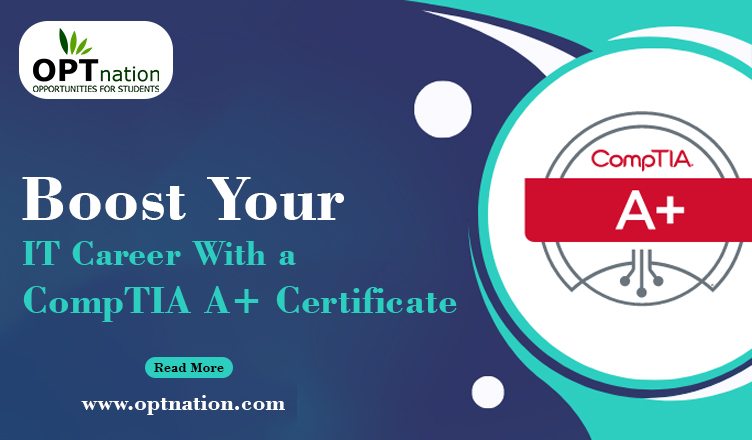If you’re interested in a career in information technology, congratulations! The industry is growing and pretty much always in demand.
Whether you plan to work in a business’s IT department, as a consultant, or with a third-party vendor, there’s something you need to help get your career started. We’re talking about a CompTIA A+ certificate, and yes this means taking some classes and passing an exam.
If the thought of taking a test sends you into a panic, prepping for the CompTIA A+ exam can help ensure you’re ready to pass with flying colors. To help improve your general understanding, here are a few key tips on how you can successfully prepare for the CompTIA A+ exam.
Review the Course Content
So, you’re probably aware that the CompTIA A+ exam has two parts. Before you ask, you need to pass both exams before receiving your certificate. The first exam is the CompTIA A+ 220-901, and the questions within it cover topics like networking, PC hardware, and mobile device hardware to name a few.
After passing the first exam, you’ll move on to the CompTIA A+ 220-902, which may be a little tougher simply due to the topics it covers. You’ll need to correctly answer questions on installing and configuring operating systems. Various operational procedures, cyber security best practices, and cloud computing strategies. This is only a brief look at what types of questions you can expect.
Once you have a good idea of what each exam covers, you’ll have a better idea of what topics you should be studying. A good tip is to create a study guide. Choose one topic to go over each study session.
Discover a Learning Style That Works for You
Are you a visual or auditory learner? Maybe you retain information best using tactile learning. Figuring out which learning style is best for you can go a long way toward helping you pass the CompTIA A+ exams.
For example, if you’re a visual learner, get the course books and download the necessary websites. You may even want to create flashcards to make it easier to review and retain the information. Auditory learners will want to invest in a great pair of headphones or earbuds. You have a lot of information to listen to. Sometimes, it also helps to take notes throughout the lectures.
Tactile learners may have it a little easier since they can actively listen and read the coursework. Either learning style works fine.
Build a Desktop Computer
If the thought of building a desktop computer is resulting in a lot of stress then a career in IT may not be the best fit for you since this is something you’re expected to know how to do—and guess what? This will be included in your CompTIA A+ exam.
Okay, so when you’re building a computer this doesn’t mean creating the components, like the modem and screen, as this is someone else’s responsibility. Instead, you’re focusing on things like choosing the right motherboard and knowing which hardware to install. You’ll also need to know what various acronyms stand for and how each one fits into an operational computer.
What types of acronyms? You know things like HDD, SSD, GPU, RAM, etc. If there’s an acronym that always seems to confuse you, now’s the time to add it to your study list.
Study the Exam Specifics and Format
There’s nothing worse when you’re already nervous about an exam to suddenly find yourself staring at a format you’re not prepared for. All of the information you spend time studying can seemingly fly out of your brain.
Thankfully, neither part 1 nor part 2 of the CompTIA A+ exam throws any odd formats at you. What can you expect on the two exams? Both give you 90 minutes to answer 90 questions, which gives you one minute to spend on each question.
You should expect a mix of multiple-choice and performance-based questions. Part 1 tends to lean a little heavier on Hardware and Networking. Combined, these two topics make up a little over half of the exam.
Part 2 of the CompTIA A+ exam spends more time on topics like Windows OS, troubleshooting software problems, and best security practices. These three topics comprise around 60% of the exam.
A good tip is to go through the exam and find the questions you know the answers to. This way, you have time to go back and focus on the questions that are leaving you a little stumped. However, don’t forget you only have 90 minutes to complete the exam so don’t spend too much time on one question.
While taking both parts of the CompTIA A+ exam can be stressful, the certificate can go a long way toward boosting your future career in IT.

